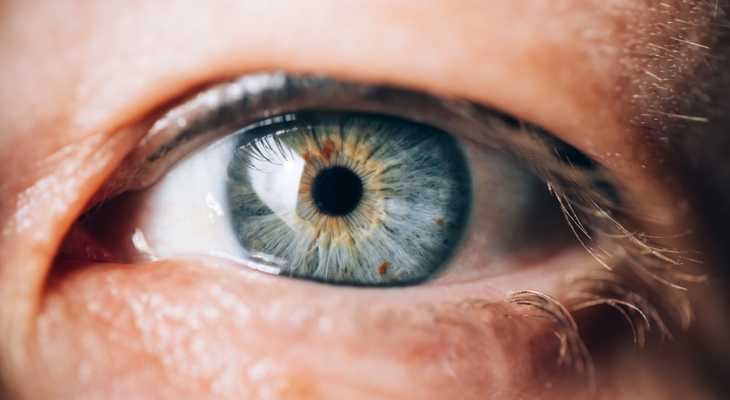What Are Eye Freckles and Are They Harmless?
- Created in Newsletters

Are Eye Freckles a Reason to Worry?
Freckles can appear anywhere on your body, including your eyes. Although eye freckles are often harmless, they can be a sign of cancer in some cases.
How Do Eye Freckles Form?
A freckle develops when melanocytes clump together in your eye. Melanocytes are cells that give your hair, eyes, and skin their color. Freckles are particularly common in the iris, the colored part of your eye. In fact, about half of all people have flecks of color in their irises, according to WebMD.
You may also have a slightly bigger type of freckle called a nevus (or nevi if you have more than one). Freckles on your skin are usually brown, but nevi can be brown, yellow, or gray. They may also be made up of multiple colors. Nevi can be present at birth or develop later in life.
What Parts of the Eye Do Nevi Have an Effect On?
Nevi can appear in these parts of your eye:
- Choroid. These nevi are located under the retina, the layer of light-sensing cells at the back of the eye. Although you cannot see a choroidal nevus by looking in the mirror, your optometrist can see it when he or she looks in your eyes during an eye examination. A choroid nevus could be a sign that you have melanoma, a form of skin cancer, although that's usually not the case. In fact, only 1 in 500 choroidal nevi become cancerous in 10 years, according to the Ocular Melanoma Foundation.
- Iris. Iris nevi are larger than iris freckles and are found in the stroma, one of the layers that make up the iris. These freckles sometimes get bigger, although they're usually not cancerous.
- Conjunctiva. A nevus may also appear in the conjunctiva, the clear layer of tissue that covers the inside of your eyelids and the whites of your eyes. These nevi are usually harmless but could become cancerous.
How Are Eye Freckles Treated?
In most cases, there's no need to treat an eye freckle. Your optometrist will monitor your freckle to make sure that it has not gotten any bigger. If that happens, your eye doctor may recommend a few tests that will determine if the nevus has become cancerous. Tests may also be needed if a choroidal nevus turns orange, becomes raised, or begins to leak fluid, as these symptoms could be signs of melanoma, according to the American Academy of Ophthalmology (AAO). Surgery can be used to remove nevi, although eye doctors like to avoid removal if possible, as a surgical procedure could damage your eyesight. Laser therapy and radiation can be helpful in treating cancerous freckles.
Be sure to let your optometrist know if you notice a change in a freckle, you are having trouble with your vision, or you are seeing flashing lights. Don't wait for your annual eye examination to report these changes. Call the eye doctor's office right away.
How Can I Prevent Eye Freckles?
Although most eye freckles can't be prevented, there's a possibility that ultraviolet light could play a role in the development of choroidal nevi, according to the AAO.
Wearing sunglasses year-round is a simple way to reduce your risk. Look for sunglasses that block both ultraviolet A and B rays. Wrap-around styles offer the best protection from the effects of the sun.
Are you concerned about an eye freckle? Give our office a call and we'll arrange a convenient appointment for you.
Sources:
American Academy of Ophthalmology: Nevus (Eye Freckle), 10/28/20
